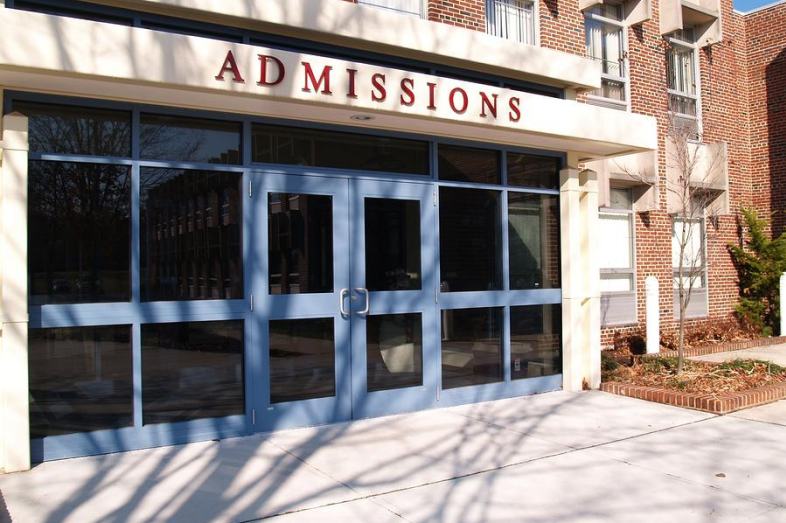

With the Supreme Court set to take another look at a controversial affirmative action case in Texas college admissions, some worry what a second decision from the nation’s highest court will have on college-bound minorities.
In 2012, the Supreme Court heard arguments in the case of Fisher v. University of Texas at Austin. The petitioner, Abigail Fisher, claimed to have been denied admission to the university on the basis of race — essentially passed over for being white, despite her 3.6 GPA.
Amy Howe of SCOTUS Blog summarizes the justices’ ruling in that case in “plain English“:
“The Court explained that a university’s use of race must meet a test known as “strict scrutiny.” Under this test, a university’s use of affirmative action will be constitutional only if it is “narrowly tailored.” The Court in Fisher took pains to make clear exactly what this means: courts can no longer simply rubber-stamp a university’s determination that it needs to use affirmative action to have a diverse student body. Instead, courts themselves will need to confirm that the use of race is “necessary” – that is, that there is no other realistic alternative that does not use race that would also create a diverse student body.”
The case was passed back to the U.S. 5th Circuit Court of Appeals, which allowed the university to continue its affirmative action policy. It will be heading back into the Supreme Court spotlight sometime next fall.
“Observers on both sides agree that the Supreme Court’s taking up of the case again may signal the end of the use of race in college admissions and, therefore, a decline in the number of African-American and Latino students on selective campuses,” Kimberly Davis wrote last week for Diverse Issues In Higher Education.
According to the 2015 Excelencia in Education factbook on the condition of Latinos in education, Latinos were the second-largest population represented at the undergraduate level in higher education in 2012-13, effectively making them the largest group who could qualify for affirmative action preferences.
Pew Hispanic Trends Project research and other studies show the number of Hispanics ages 18 to 24 who are enrolled in college has more than tripled over the past 20 years. In 2013, 2.2 million Hispanics were enrolled in college — a dramatic 201 percent increase from 728,000 in 1993.
In 2008 when Fisher was denied admission to the University of Texas, Latinos made up 16 percent of the freshman class, Latin Times reports. Last year, the student population at the university was 21 percent Latino. It’s unclear whether affirmative action has led the growth or whether other factors such as overall growth of the Latino population or Texas’ race-neutral admissions guarantee to the state’s public colleges for high school students who score in the top 10 percent of their high school class have played a bigger role.
Consider the changes to the minority college student population in states that have banned affirmative action. Under Florida’s executive order to ban affirmative action in college admission policies, the raw numbers of Hispanic and black students enrolled in state colleges and universities are up. However, according to PolitiFact Florida, the percentage of black students in the state’s university system has gone down. The percentage of Hispanic students has increased, but that could be attributed to the changes in reporting race and ethnicity during the admissions process rather than the affirmative action ban, as former Gov. Jeb Bush has stated.
After affirmative action was scrapped in California in 1996, UCLA saw a dramatic decrease in black and Hispanic enrollment, NPR reported in 2013 just before the first Supreme Court ruling on the Fisher case. This led the university to start a more “holistic” approach to admissions, which considered factors like family income and whether a student was the first in his family to go to college. As a result, the percentage of Latino and black students began to grow.
In an editorial published Monday, The Daily Californian senior editorial board staff address University of California, Berkeley enrollment numbers in their support of affirmative action: “In reviewing UC Berkeley’s own admissions figures, released last week after a lengthy delay, it is clear that rejecting affirmative action has perpetuated a skewed student population that is unrepresentative of the diversity within our state.”
The opinion writers argue that California’s Proposition 209, which prevents state governmental institutions from considering race, ethnicity and sex in their decisions, has “had a negative effect on the overall admittance rates of underrepresented minorities at UC Berkeley, particularly Latino and black applicants.” According to the newspaper, Latinos make up 19 percent of UC Berkeley’s student population in a state that is more than 38 percent Latino.
Austin-based USA Today correspondent Rick Jervis, a Cuban-American, summarizes the issue well: “As justices and scholars debate the merits of affirmative action, higher ed leaders should seriously ponder not just how to get more minority students on their campuses — but how to keep them there.”